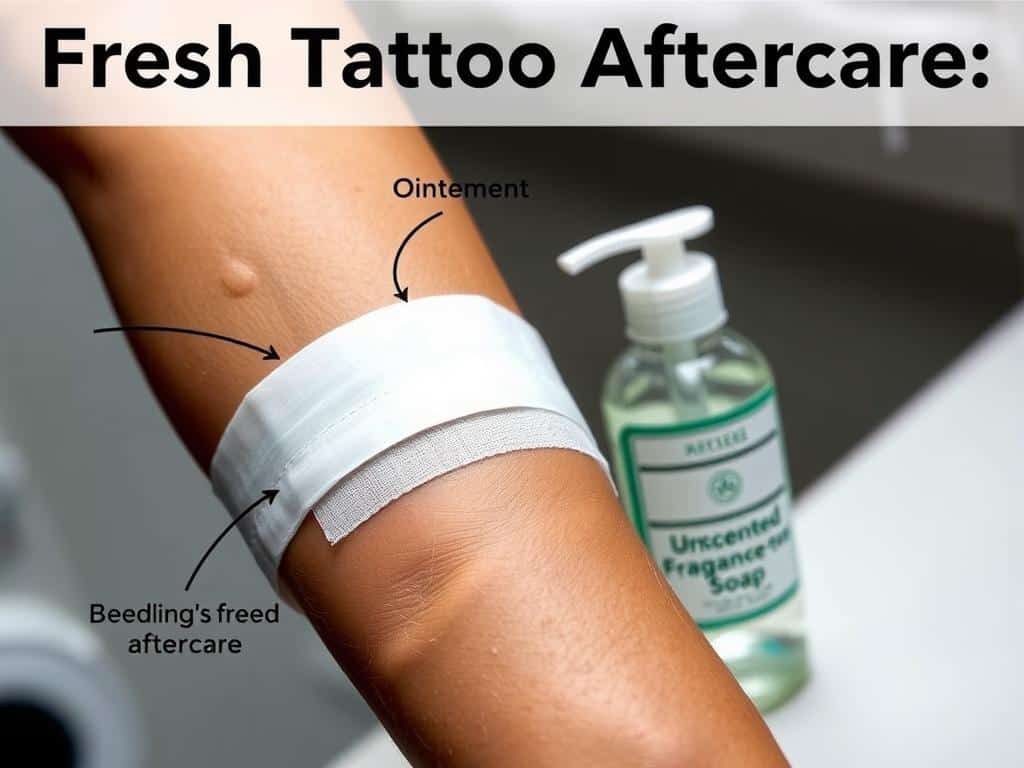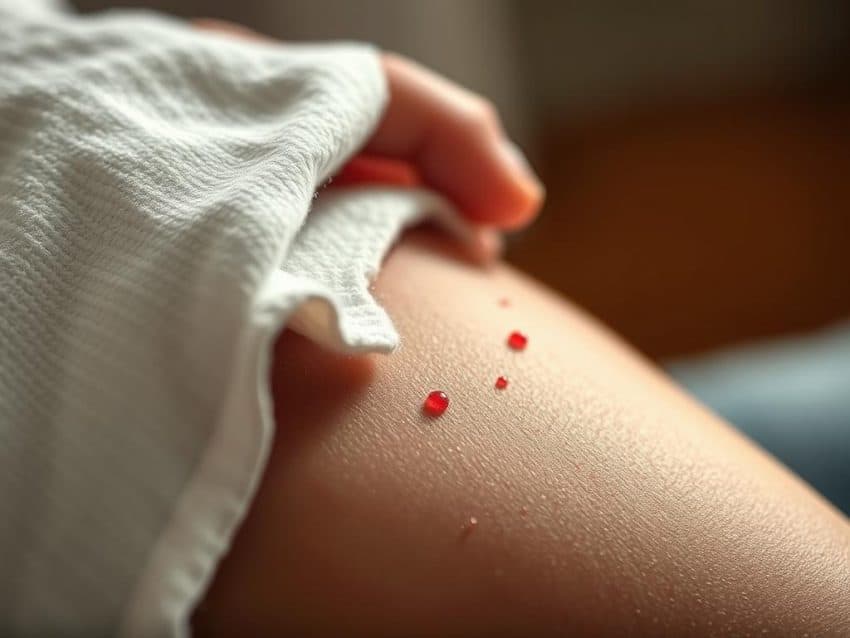Getting a tattoo is a big deal—it marks a moment, an emotion, or a way to express yourself. I felt excited and a bit unsure as I sat in the artist’s chair. It’s normal for tattoos to bleed, which can be scary for first-timers.
But knowing it’s part of the process is key. Over the next few days, I learned how to handle bleeding tattoos. I also found healing tips to ensure my tattoo healed well and safely. But what if the bleeding doesn’t stop? Knowing when to seek help is important.
Let’s explore tattoo bleeding aftercare together. This way, you can feel confident on your tattoo journey.
Key Takeaways
- Bleeding after getting a tattoo is common and usually normal.
- Fresh tattoos may weep plasma, blood, and ink for the first few days.
- It’s essential to clean your tattoo gently and frequently.
- Consult a healthcare professional if bleeding continues or worsens.
- Understanding the healing stages can help alleviate concerns.
Understanding Tattoo Bleeding: Is It Normal?
Getting a tattoo is exciting, but you might wonder about the process and aftercare. Many people worry about tattoo bleeding. It’s common to see some bleeding after getting a new tattoo. This usually happens in the first three days.
Do New Tattoos Bleed?
Bleeding from new tattoos varies by person and tattoo location. Areas like the inner arms and thighs bleed more. This is because their skin is thinner and more vascular. In the first 48 to 72 hours, you might see blood, plasma, and ink.
This weeping is part of healing. It shows your tattoo is settling into your skin. It’s important to know that some bleeding is normal. But, if it doesn’t get better, you should see a doctor.
Keeping your tattoo clean helps it heal well. If bleeding goes on too long or you feel pain, see a doctor. Knowing what to expect can make healing easier.
Tattoo Bleeding Aftercare: Essential Tips
After getting a tattoo, I quickly realized the importance of proper aftercare. It helps manage any bleeding and ensures my tattoo heals well. Following simple aftercare tips can reduce infection risk and keep the design looking great.
Keeping Your Tattoo Clean
Keeping your tattoo clean is key. I found using hypoallergenic soap, like H2Ocean’s Blue Green Antibacterial Foam Soap, helpful. Washing it gently with warm water at least twice a day removes plasma, excess ink, and bacteria.
Those in harsh environments might need to wash their tattoo more often. This is important for minimizing bleeding and promoting healing.
How to Use Bandages Effectively
My artist told me to keep the bandage on for a few hours after getting my tattoo. This protects against irritation and infection. After removing it, using absorbent pads to manage bleeding was helpful.
I changed them often until the bleeding stopped. Applying a thin layer of moisturizer like Aquatat Ointment kept the area hydrated without suffocating the skin.
Avoiding Blood Thinning Substances
Before getting my tattoo, I learned to avoid blood thinning substances. Drinking alcohol or taking certain medications can make bleeding worse. Being mindful of these helped me create a better healing environment for my tattoo.

Common Concerns: When to Seek Help
Getting a tattoo is exciting, but it can also raise concerns about healing. Knowing when to get medical help is key. Some signs might mean serious problems with tattoo care.
Signs of Infection
Watch your tattoo for infection signs. Look out for redness, warmth, and pain. These are early signs that need doctor’s attention.
Pus or a bad smell means you should act fast. If the skin feels hot or swells, it could be infected. These signs are important to watch for and act on.
What to Do If Bleeding Persists
If bleeding doesn’t stop, take action quickly. Clean the area with mild soap and apply gentle pressure with a cloth. This can help manage the bleeding.
If bleeding doesn’t stop after a few days, contact your tattoo artist or a doctor. Ignoring it can cause more problems. Being careful and quick can help your tattoo heal faster.
Conclusion
In this tattoo aftercare summary, I’ve covered key points for managing your new tattoo. It’s important to know that a new tattoo can ooze plasma and fluids for up to a week. Also, redness and swelling are normal and usually go away in a few days.
Using good tattoo bleeding management techniques is key. This includes washing your tattoo twice a day and using mild, unscented products. These steps can greatly help in the healing process.
The first month of healing is very important. You might feel minor discomfort, itchiness, and skin flaking. If redness or irritation lasts more than three days, it’s best to talk to your tattoo artist.
Also, watch for signs of infection, like if symptoms last after two weeks. This helps keep your tattoo looking great for a long time.
Learning about tattoo aftercare is not just for the first few days. It’s about caring for your tattoo for months to keep it looking good. With the right knowledge and practices, you can take care of your tattoo well. This ensures it stays as beautiful as the day it was done.
